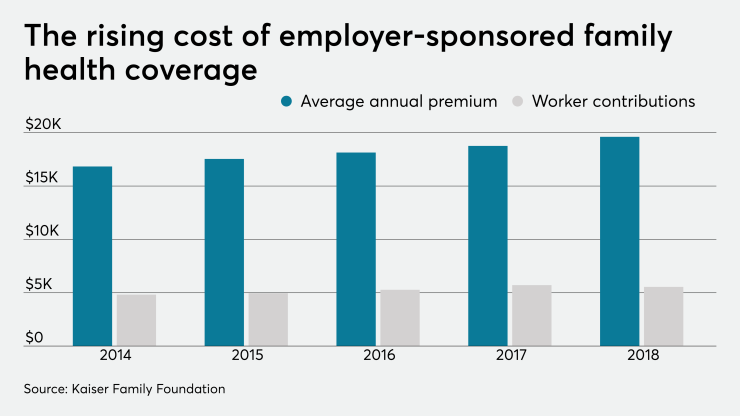Employers can end up spending more than $230 billion a year in excess healthcare costs as result of improper education on how to make the most of their medical coverage.
Only 7% of consumers can correctly define the terms premium, deductible, coinsurance and out-of-pocket maximum, according to United Healthcare research. Yet
Teaching your employees how to be better healthcare consumers is an important step toward reducing costs for employees and employers alike. Here are five steps you can take to better educate your participants.
Go back to basics. No matter how well educated your employees are, that doesn’t mean they understand benefits. Remember, your employees may not be the healthcare CEO of their families. As often as possible, reinforce the key concepts of health insurance — premiums, deductibles, coinsurance, copays, out-of-pocket maximums and networks — and how they work together. Participants need a thorough understanding of their financial obligation before they’ll see the importance of shopping for care.
Tell them why. Have a call to action. Most people don’t realize that there isn’t a set price for healthcare services and products — or that the price of any given service or product can vary by tens, hundreds or even thousands of dollars in the same geographic area and the same network — with no change in quality.
Also see:
Do the math. The quickest way to motivate someone is to address their number one question: “What’s in it for me?” Use lots of examples and show your math. Showing an employee that if they shop around they could end up, for example, paying 20% of $2,000 instead of 20% of $8,000. This can be a powerful message.
Show employees what to do and simplify the process. Even if your employees understand that they can shop for services, most won’t know how. Offer clear guidance through how-to’s or checklists and direct participants to resources they can use themselves, or that will reinforce the importance of shopping.
Options might include a list of websites that offer a free calculator to compare health plans and prescription drug comparison sites that enable consumers to shop for prescriptions by ZIP code. Employers should also offer transparency or cost comparison tools provided by your health insurer. Access to benefits educators will help employees elect appropriate options during open enrollment.
There are also advocacy and transparency services, which can shop on an employees’ behalf, find cost-effective providers and resolve claims and billing issues.
Educate year-round. There’s certainly no lack of opportunities to demonstrate the value of shopping for care, so keep the messages coming. Open enrollment? Show how to compare the true cost of each plan. Time for school physicals? Talk about retail clinics or urgent care centers as an option if there isn’t time for a regular doctor’s visit.
Shopping for prescription drugs or outpatient tests; choosing between the ER, urgent care or telemedicine; using FSAs or HSAs to manage the cost of care, the list is endless. Year-round communications increases the likelihood the consumerism message will reach your employees at the point they need to hear it.
With the right communications materials and resources, along with constant reinforcement, employers can begin to turn employees into true health care consumers.






